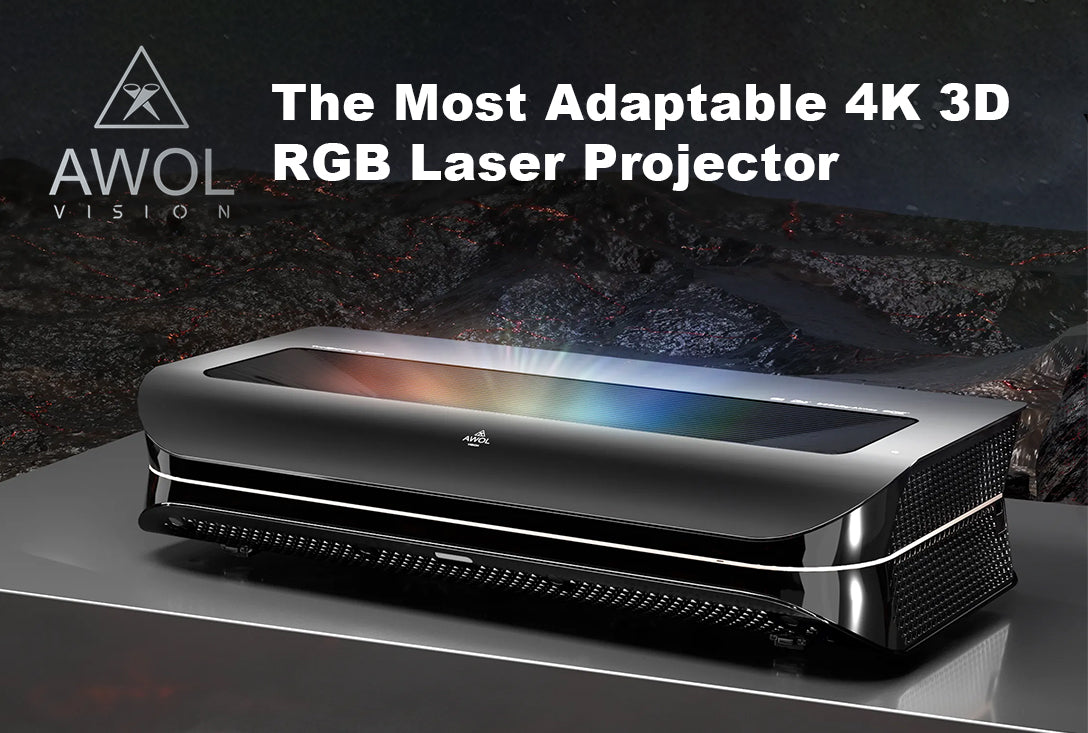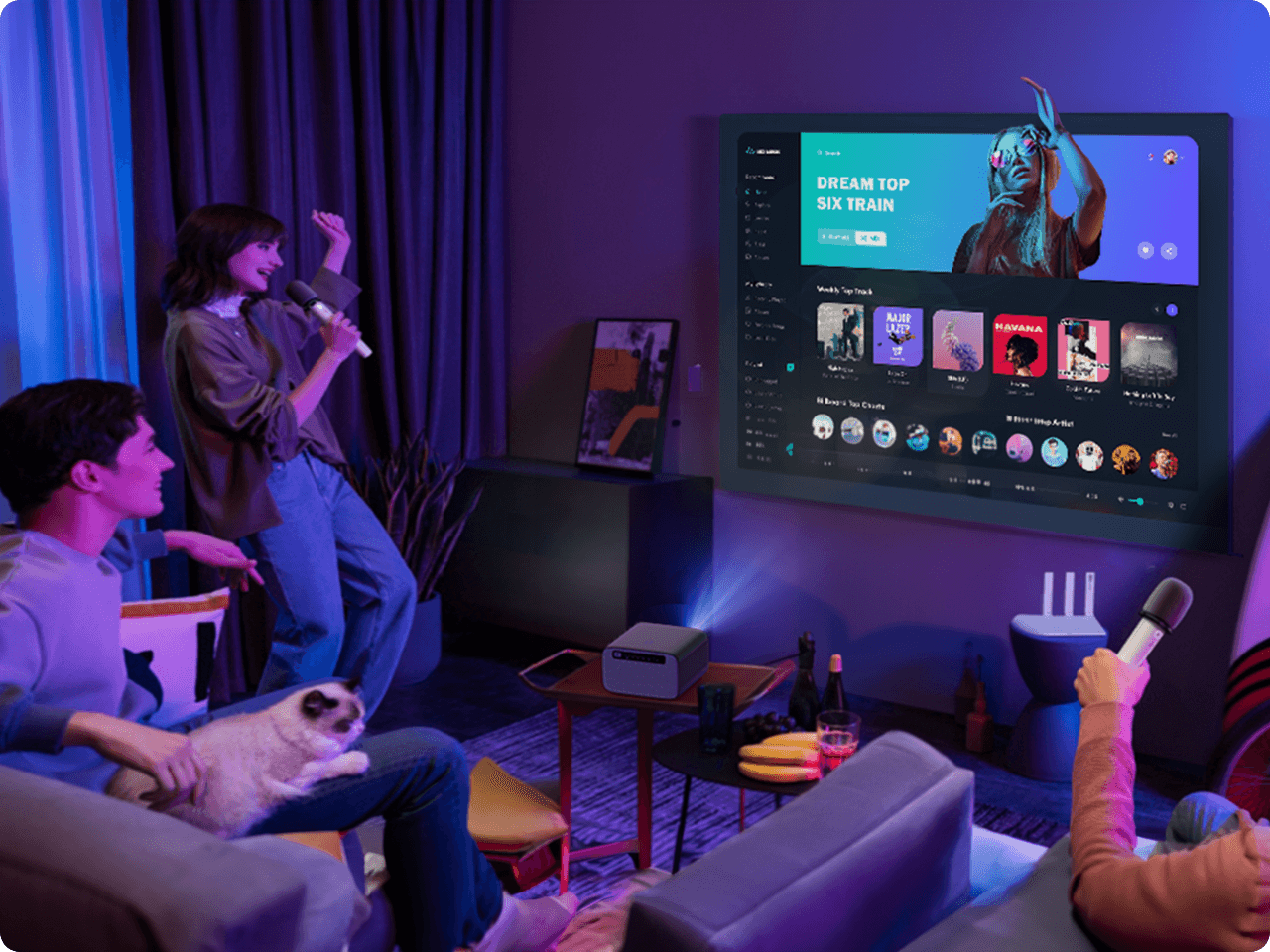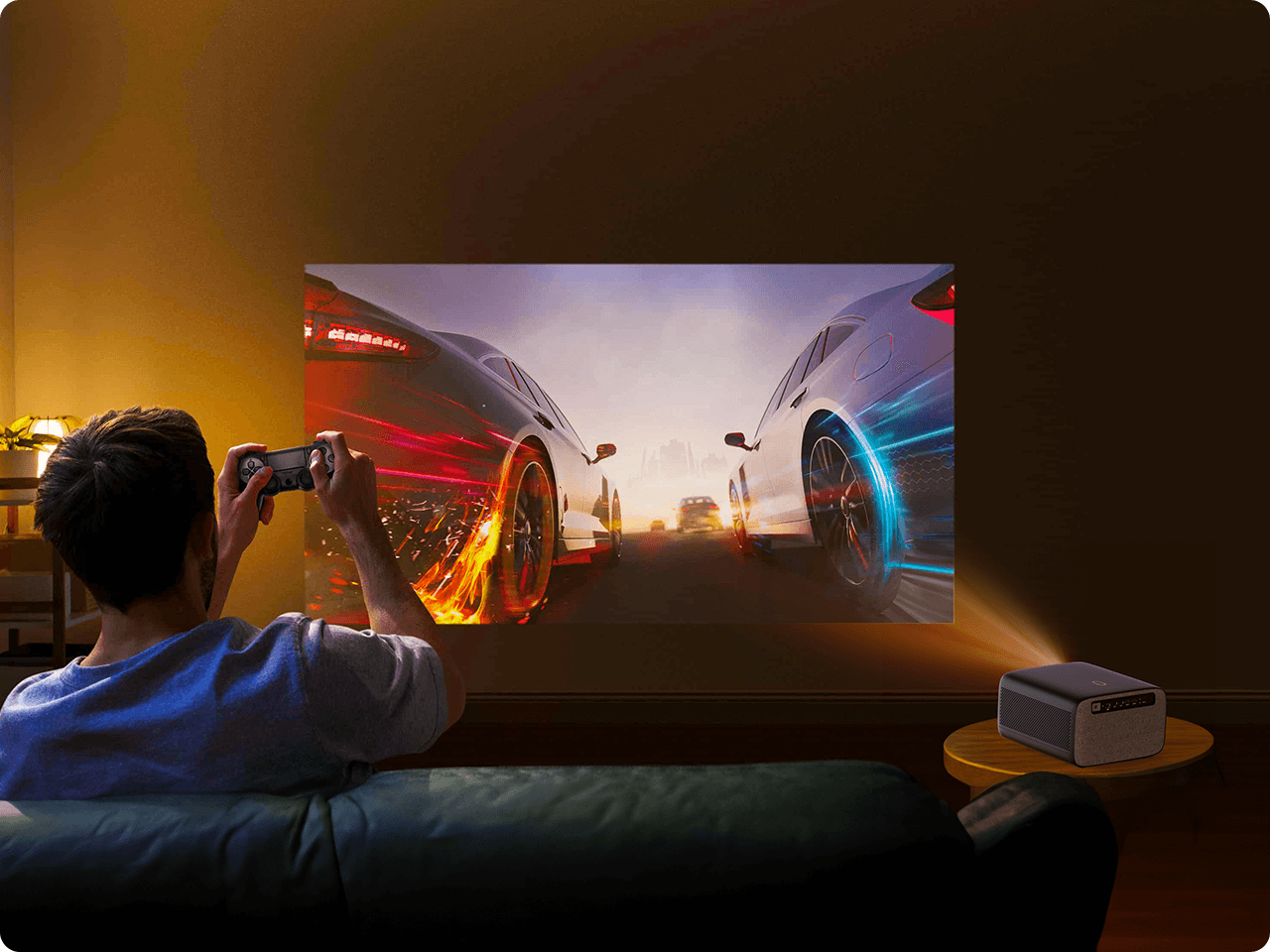When it comes to creating the ultimate home theater or delivering a professional presentation, choosing the right projector is crucial. Projectors come in various types, each utilizing different technologies to produce images. Understanding these technologies and their advantages and disadvantages can help you make an informed decision. Let's explore the main types of projectors: LCD, DLP, LED, LCoS, and Laser projectors.
LCD (Liquid Crystal Display) Projectors
LCD (Liquid Crystal Display) is a display technology that uses liquid crystals as optical elements. In an LCD projector, the light source passes through color filters and then enters the liquid crystal panel. The liquid crystal panel controls the amount of light passing through, which is then projected through a lens to form an image.
Advantages:
- Color Accuracy: LCD projectors are known for their excellent color accuracy and sharp images.
- Affordability: Generally more affordable compared to other types.
- Reliability: These projectors are typically reliable and require low maintenance.
Disadvantages:
- Contrast Ratio: LCD projectors often have lower contrast ratios, meaning blacks may appear more like dark grays.
- Screen Door Effect: This is where the grid lines of the LCD panel are visible(at low resolution), which can be distracting.
Formovie Xming V1 Ultra LCD Native 4K Projector
DLP (Digital Light Processing) Projectors
DLP (Digital Light Processing) is a display technology that uses digital micromirrors as optical elements. In a DLP projector, the light source passes through a spinning mirror, dividing the light into the three primary colors: red, green, and blue. The digital micromirrors then control the projection of these colors, which are subsequently projected through a lens to form an image.
Advantages:
- High Contrast: DLP projectors offer high contrast ratios, producing deeper blacks.
- Smooth Motion: Excellent at handling motion, making them great for video playback.
- Compact Design: Generally more compact and lightweight.
Disadvantages:
- Rainbow Effect: Some users may see flashes of color, known as the "rainbow effect."
LED (Light Emitting Diode) Projectors
LED projectors use LED lights to produce the image. These LEDs can be red, green, and blue, which are combined to create the full spectrum of colors needed for the projected image. The light from the LEDs passes through the projection technology (either LCD panels or a DLP chip) to create the image, which is then projected onto the screen.
Advantages:
- Longevity: LEDs have a long lifespan, often up to 20,000 hours.
- Energy Efficiency: They are energy-efficient and produce less heat.
- Consistent Color: LED projectors maintain consistent color performance over time.
Disadvantages:
- Brightness: Generally, LED projectors are not as bright as their lamp-based counterparts.
- Cost: They can be more expensive upfront.
Formovie Xming Episode One Google TV Netflix LED Projector
Laser Projectors
Advantages:
- Brightness: Extremely bright, suitable for large screens and well-lit environments.
- Color Accuracy: Exceptional color performance and contrast.
- Long Lifespan: Laser light sources have a very long lifespan and require minimal maintenance.
- Cost: Typically, laser projectors are the most expensive.
- Complexity: They may require professional installation and setup.
After discussing so many types of projectors, you might feel a bit overwhelmed and unsure about which one to choose. Don’t worry, we will further explain to help you make a better decision:
For those with a sufficient budget and a focus on picture quality, I highly recommend a laser projector. Laser projectors have higher contrast, richer colors, and provide a more stunning visual experience, making them particularly suitable for home theaters and high-end audio-visual needs.
In an office or educational environment, an LED projector is an excellent choice. LED projectors have a long lifespan, low power consumption, and superior color performance, making your presentations more vivid.
If you have a limited budget but still want good color performance and clarity, an LCD projector is an ideal choice. These projectors generally offer higher brightness and more natural colors, making them perfect for home entertainment and small meetings.
For users who need fast response and clear images, a DLP projector is a good option. DLP technology provides excellent image processing capabilities, making it especially suitable for watching action movies and playing games.
No matter what your needs are, we hope you find the projector that best suits you, bringing more convenience and enjoyment to your life and work. If you have any questions or need further advice, please feel free to contact our customer service team, and we will be happy to assist you.






















